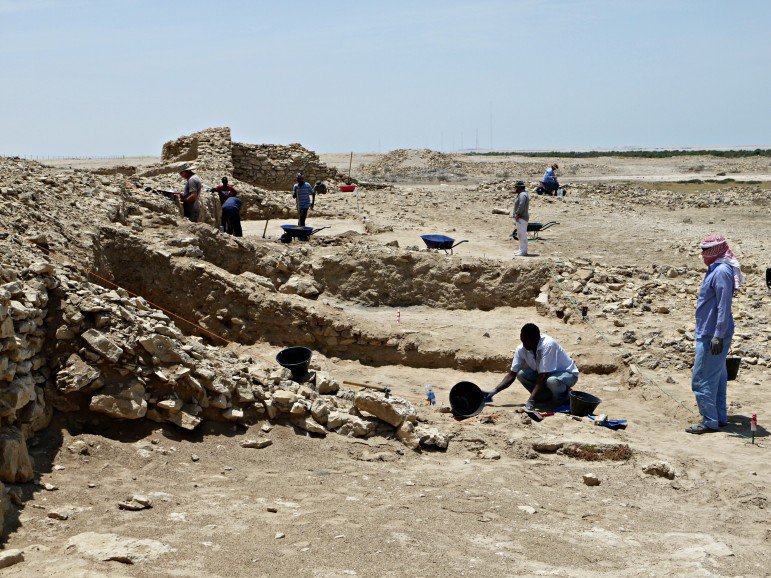 In an effort to find out more about one of the country’s earliest urban settlements, researchers in Qatar have been using drones to photograph and map more than 220 acres of ruins in the northern tip of the country.
In an effort to find out more about one of the country’s earliest urban settlements, researchers in Qatar have been using drones to photograph and map more than 220 acres of ruins in the northern tip of the country.
Archaeologists say the ruins being unearthed at Ruwayda, located some 10km southwest of Al Ruwais, have been helping to advance historians’ understanding of the various settlers who inhabited Qatar in recent centuries, and could ultimately lead to the development of a significant tourist attraction.
So far, two mosques, a series of warehouses, large courtyard homes, a palace and pottery from China, Iran and Saudi Arabia have been unearthed. Archaeologists have also uncovered what is believed to be Qatar’s largest fort, which is thought to date back to the 16th century.
In comparison, the better known coastal town of Al Zubarah flourished in the late 18th and early 19th centuries, according to UNESCO, which designated it a World Heritage site in 2013.
History
The ruins found at Ruwayda suggest the area was trading hub, and a settlement with a relatively sizable population.
This indicates that it was likely a town or even a city, rather than one of the smaller villages found elsewhere in northern Qatar, said Andrew Petersen, a professor of Islamic archaeology at the University of Wales Trinity Saint David.
Original article by Peter Kovessy
Continue reading at Doha News:
Archaeologists turn to drones to unearth new chapter of Qatar’s past



















Comments